Equipment designed to be air-tight, such as incubators, pharmaceutical isolators, glove boxes, and the like need to be tested for leaks.
An article published in the journal, Clean Air and Environment1, discusses the difference between leak rate and leak detection. The article details the ISO classification of leak tightness based on volume loss per hour.2, 3 There are several different methods for detecting leaks, including the use of helium gas, dispersed oil particulates (smoke), and ammonia leak cloths.
The ammonia leak cloth is very simple. It will turn from yellow-orange to blue in the presence of a very small amount of ammonia gas.
To test the equipment:
- Place a small dish of liquid ammonia inside
- Pressurize the isolator
- Place the ammonia leak detector cloth at any suspect seal point
- If ammonia “leaks” through the seal, the cloth will turn blue
The cloth is available in two sizes, 20”x 20” or 40”x 40”, and it can be draped over the equipment or cut into smaller pieces to place around seal points.
This method is an easy, inexpensive way to detect leaks. Ammonia gas is a very small molecule that disperses easily and can pass through very small leaks. Liquid ammonia is readily available, inexpensive, and easy to clean up.
It doesn’t take much ammonia to run the test because the indicator chemicals in the cloth are very sensitive to the ammonia gas.
And here’s an added bonus: the test is reversible. The cloth will revert back to the original yellow-orange color once it’s removed from the ammonia source. Check out the images below to see how the process works.

Figure 1. Samples of Ammonia Leak Cloth

Figure 2. Ammonia Leak Cloth placed inside a “closed” system with ammonia. Note the color change on the second cloth near the “leak.”
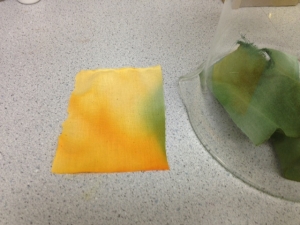
Figure 3. Another view of the cloth exposed to the “leak.”
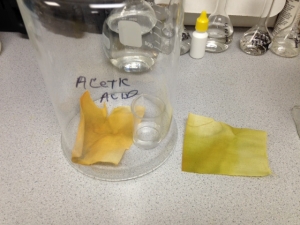
Figure 4. Samples of Ammonia Leak Cloth (previously exposed to ammonia) after 1 minute exposure to acidic and normal atmospheric conditions. Note that the cloths are reversing back to their yellow-orange color.
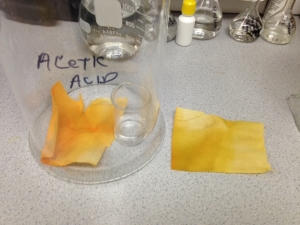
Figure 5. Samples of Ammonia Leak Cloth (previously exposed to ammonia) after 5 minutes exposure to acidic and normal atmospheric conditions. Note that the cloths have completely reversed back to the yellow-orange color.
References:
- Coles, Tim (2012). Leak Rate Measurement for Pharmaceutical Isolators: Practical Guidance for Operators and Test Engineers. Clean Air and Containment Review Issue 11, pages 8-12.
- ISO Standard 10648-2:1994. Containment enclosures—Part 2: Classification according to leak tightness and associated checking methods.
- ISO Standard 14644-7:2004 Cleanroom and associated controlled environments—Part 7: Separative devices (clean air hoods, gloveboxes, isolators and mini-environments)
Additional Resources:
Midcalf, Brian. Pharmaceutical Isolators: A Guide to Their Application, Design, and Control. Pharmaceutical Press (2004)
Coles, Tim. Isolation Technology: A Practical Guide, 2nd Edition. CRC Press (2004)


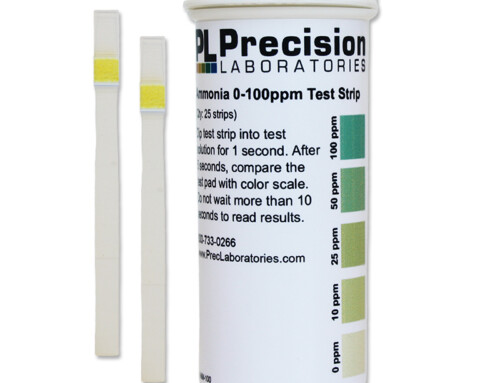
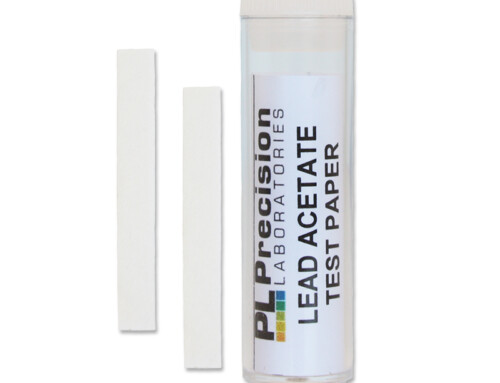
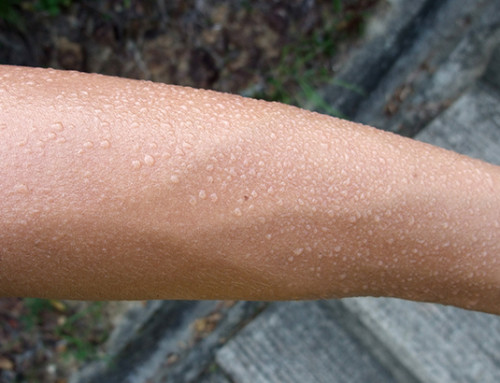

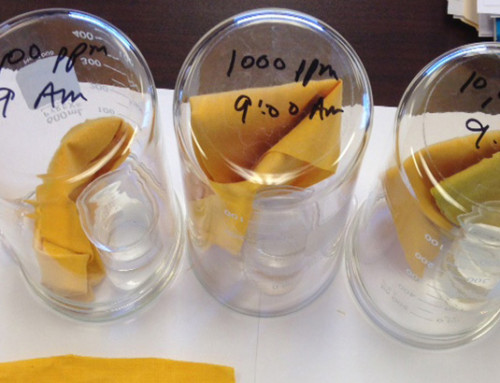
Leave A Comment